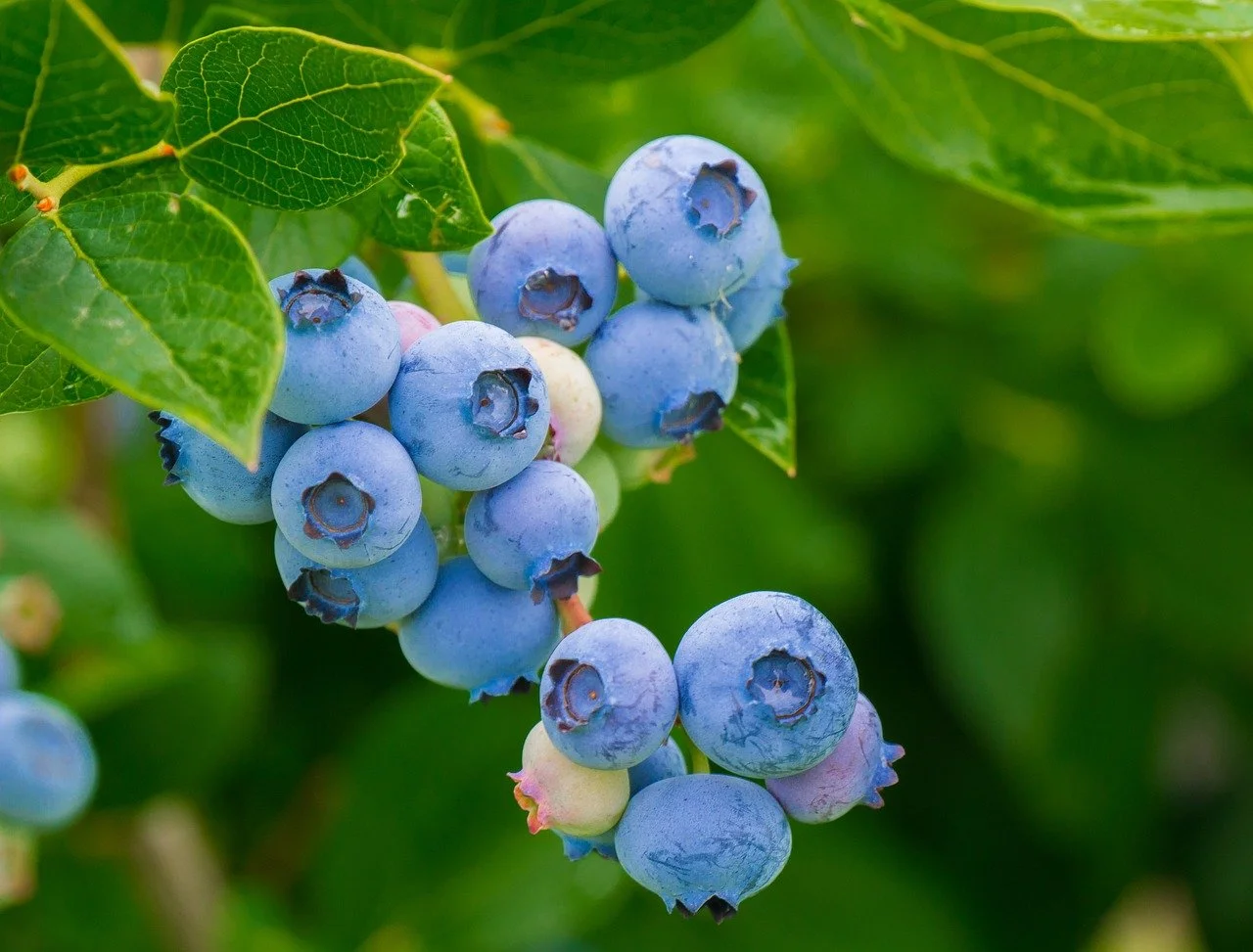Plant Profile: Blueberries
Grow Your Own Blueberries in North Carolina: A Surprisingly Simple Guide (Kind Of)
Let’s be honest: we’ve all walked past those gorgeous little cartons of blueberries in the grocery store and thought, $5.99?! For fruit the size of a pencil eraser? That’s the moment many of us start fantasizing about growing our own. It sounds dreamy—stepping into your backyard barefoot, birds chirping, plucking a handful of juicy blueberries, probably while wearing linen. But is growing blueberries at home in North Carolina actually that magical?
Surprisingly, yes—if you do it right. And luckily for you, I'm here to tell you how. Whether you're a seasoned NC gardening pro or you’ve killed every houseplant you've ever owned, here’s everything you need to know to successfully plant and grow blueberry bushes right in your backyard.
First Things First: Can You Grow Blueberries in NC?
Yes! North Carolina is a blueberry-growing goldmine. Thanks to our acidic soil and relatively mild winters, the state is practically begging you to put some blueberry bushes in the ground.
We’re not Maine or Michigan (they can keep their freezing winters and smug wild blueberries), but we have the perfect climate for southern varieties like:
Rabbiteye (great for backyard growers in NC)
Highbush (popular in cooler mountain areas)
Southern Highbush (good for warmer coastal zones)
So yes, you can absolutely grow blueberries in your backyard—and you should, unless you hate happiness.
Picking the Right Variety for Your NC Garden
Okay, now that you're onboard the berry train, let’s pick your passengers.
If you're in Piedmont or Eastern NC:
Go for Rabbiteye blueberries. These are tough little shrubs, native to the South, and they thrive in NC heat and humidity. Popular varieties include:
Climax
Tifblue
Premier
They’re drought-resistant, pest-resistant, and generally more forgiving than a toddler on a juice cleanse.
If you’re in Western NC (the mountains):
You’ll want Northern Highbush types, such as:
Bluecrop
Blueray
Jersey
They prefer cooler temperatures and will reward you with big berries—if you keep the deer away (good luck with that).
Location, Location, Location
Blueberries aren’t exactly high-maintenance, but they do have standards. So unless you want to disappoint them (and yourself), follow these rules:
Sun is non-negotiable. Pick a spot that gets at least 6–8 hours of full sun. Dappled shade is a no-go. You want fruit, not twigs.
Good drainage is a must. Blueberries hate wet feet. Plant on a slope or raised bed if your yard tends to hold water.
Wind protection is nice. No one likes being cold and wind-blown, not even shrubs.
Soil Secrets: It’s All About the Acid
Here’s where a lot of backyard blueberry dreams go to die: the soil. Blueberries need acidic soil with a pH between 4.5 and 5.5. (Don’t know your soil pH? Time to break out the test kit. Welcome to grown-up gardening.)
If your soil is too alkaline, you can:
Mix in pine bark mulch or pine needles
Add elemental sulfur (but give it a few months to work)
Or skip the drama and plant in containers with potting mix made for acid-loving plants
Trust me: if you ignore this step, your blueberries will remind you—by dying.
Planting Your Blueberry Bushes (Let’s Get Dirty)
Now for the fun part.
When to Plant:
In North Carolina, the best time to plant is late winter to early spring (February to April).
If you missed the boat, you can plant in the fall—but be ready to baby your bushes through the first winter.
How to Plant:
Dig a hole twice as wide and just as deep as the root ball.
Mix compost and acidic soil amendments (pine bark, peat moss) into your native soil.
Set the bush in the hole, roots loosened, and backfill.
Water generously and mulch like your life depends on it—2 to 3 inches of pine needles or bark will keep weeds down and moisture in.
Caring for Your Blueberries (AKA Keeping Them Alive)
Here’s the real secret to a thriving NC garden: neglect—but make it intentional.
Watering:
Blueberries need about an inch of water per week, especially in the first couple of years.
Don’t flood them. Remember, no wet feet.
Fertilizing:
Hold off the first year. After that, use an acid-loving plant fertilizer (like azalea food) in early spring and again in late spring.
Pruning:
Yep, you’ve got to prune.
Trim off any weak or dead branches each winter.
Remove the lower shoots (called "suckers") to keep the plant’s energy focused on fruit.
Birds, Bugs, and Other Jerks:
Birds love blueberries as much as you do. Use netting or accept your fate.
Rabbiteye varieties tend to be pest-resistant, but keep an eye out for aphids and fungal issues.
Patience, Young Berry Farmer
Here’s the part you’ll hate: you shouldn’t expect much fruit for the first 2-3 years. Yes, that’s years. But by year 4 or 5? You’ll be drowning in blueberries.
Pro tip: Don’t let your bushes fruit the first year. Pinch off flowers so they can focus on growing strong roots. Yes, it's cruel. Yes, it's worth it.
Harvesting: The Sweet Spot
Blueberries don’t ripen all at once. You’ll get waves of berries over a few weeks in early to mid-summer. Pick them when they’re fully blue, and they’ll just pop off the stem when gently tugged.
Don't harvest too early—unless you enjoy bitter disappointment (literally).
Wrapping Up: Your Backyard Berry Empire Awaits
Growing your own blueberries in North Carolina doesn’t have to be a complicated, soil-testing, bird-fighting mess. Okay, maybe it is a little. But once you’ve got a few healthy bushes in your backyard and you’re snacking on sun-warmed berries like a woodland creature, you’ll understand the hype.
So go ahead. Get your hands dirty. Be the person who casually mentions they “grow their own” while holding a mason jar full of berries. We all need a little backyard glory, and blueberries just might be yours.



